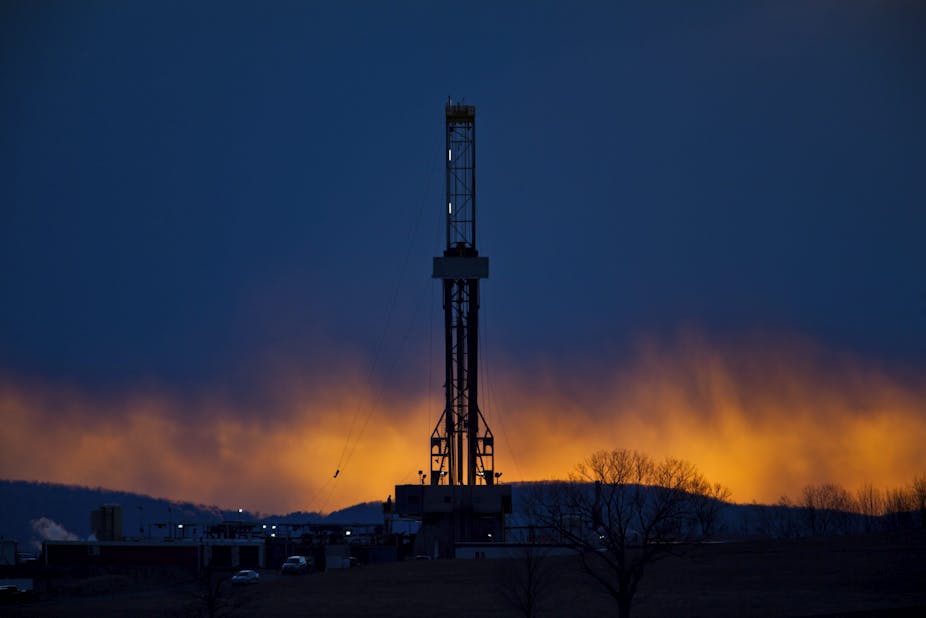Australia may have over 1000 trillion cubic feet in undiscovered shale gas resource but the enormous cost of infrastructure needed to extract it may outweigh its economic benefit unless shale gas prices rise, a new report has found.
Shale gas, which is buried further below the surface of the ground than coal seam gas, is abundant in the United States and in Australia, and is extracted using similar techniques, including fracking.
The new report, written by the Australian Council of Learned Academies, is part of Securing Australia’s Future, a series of research programs selected by the Prime Ministers Science, Engineering and Innovation Council and the Chief Scientist.
The study looked at shale gas and resources, technology, monitoring, infrastructure, human and environmental impacts, issues communication, regulatory systems, economic impacts, lessons learned from the coal seam gas industry, and impacts on greenhouse gas reduction targets.
Not a cheap gas
The report found that shale gas production costs in Australia are likely to be significantly higher than those in North America.
“Shale gas will not be cheap gas in most circumstances. It will require a relatively high price to make it profitable to produce,” the report said.
In Australia, shale gas will require a price of the order of $6 to $9 a gigajoule to make its production and transport profitable, the report said.
“By comparison, the wholesale gas price for long-term contracts of gas for the domestic market in eastern Australia is around $4 per gigajoule while current eastern Australia domestic wholesale prices are about $6 per gigajoule,” the report said.
“Based on these estimates, development of Australian shale gas marketed on the east coast is unlikely to occur until domestic and international netback prices (around $10 per gigajoule) are equalised.”
Dr Vaughan Beck, one of the authors of the report and a fellow of the Australian Academy of Technological Sciences and Engineering, said developers would also have to allow for the extra cost of transmission and processing of the product.
“So it’s not currently economical in Australia, in general terms,” he said.
Road and pipeline networks in North America are more developed than in Australia and the cost of developing such infrastructure would need to be factored in, the report said.
Social licence
The report said it was crucial for shale gas developers to gain community support to operate and may involve negotiating agreements with indigenous land owners.
“In order to develop effective relationships with communities potentially impacted by shale gas developments, it will be necessary to have open dialogue, respect and transparency,” the report said.
Water and environment
More water may be needed for shale gas fracking than is used for coal seam gas extraction, the report said, warning that “contamination of freshwater aquifers can occur due to accidental leakage of brines or chemically-modified fluids during shale gas drilling or production; through well failure; via leakage along faults; or by diffusion through over-pressured seals.”
“The petroleum industry has experience in managing these issues and remediating them, but in a relatively new shale gas industry, unanticipated problems may arise and it is important to have best practice in place, to minimise the possibility of this risk,” the report said.
Using shale gas in gas turbines to produce electricity creates 20% more greenhouse gas emissions than conventional gas but between 50% and 75% of the emissions of black coal, the report found.
“Some people have raised the question ‘Why extract shale gas? Why not spend the money on cleaner renewable energy?’ But that is not a question that was in the terms of reference of this Review,” the report said.
Uncertainty
Vlado Vivoda, a shale gas expert and Research Fellow at Griffith University said the report was timely but said he thought it was unlikely gas prices will rise.
“If massive volumes of US shale gas enters the international market as liquid natural gas (LNG) over the next decade (and mainly gets imported by Asian countries), this may challenge the prevailing LNG pricing structure in Asia, where LNG price is indexed to crude oil,” he said.
“This, in fact, may be a crucial development which may affect the prospects for Australian shale gas, which is more expensive than North American shale gas.”
Dr Vivoda said that given the high infrastructure costs and uncertainty about LNG prices in the region “it will be risky for investors to enter into this game.”
Alarm bells
Colin Hunt, Honorary Fellow in Economics at University of Queensland said the report was a comprehensive outline of the risk and benefits of shale gas extraction in Australia.
“Alarm bells will be set ringing because of the Australian experience with the way that companies have conducted environmental impact assessments for their coal seam gas and coal mining projects. Best practice in controlling the volume of water use from aquifers, contamination of aquifers with produced water and fracking chemicals is advocated in the report,” he said.
“However, it is worrying that a recent survey found that most environmental impact assessments were deficient in their analysis of how a project would contribute to cumulative environmental impacts of water use and disposal associated with gas and coal mining.”
Dr Hunt also warned of habitat fragmentation and biodiversity risks presented by the development of shale gas infrastructure.

